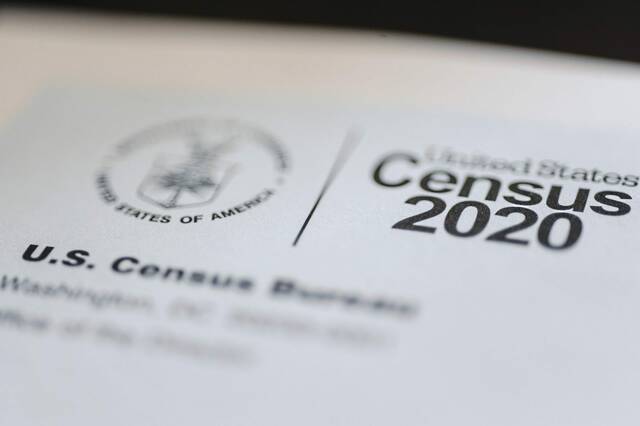Some communities and neighborhoods across Western Pennsylvania could be left without their fair share of funding after the 2020 census undercounted millions of people in certain communities nationwide.
The once-a-decade survey undercounted Black, Hispanic and Native American residents while overcounting white and Asian American residents, according to a Census Bureau report. In addition, children up to 17 also were undercounted, with the largest discrepancies seen in children from infancy to 4 years old.
While overall population numbers were largely accurate, the report said, skewed data related to race could impact the allocation of state and federal funds, which add additional dollars to schools and hospitals while also covering infrastructure costs. Impacts also could be felt in economic decisions made over the next 10 years.
“If there’s an undercount, we don’t have any numbers, any data from census about Pennsylvania, but that could have an impact,” said Norman Bristol Colon, chief diversity officer with the Pennsylvania Department of Community & Economic Development. “And the challenge is this — whatever number we submitted in 2020, it is the number that is official for Pennsylvania for the next 10 years, so there’s really nothing we can do about it.”
According to the report, the Hispanic population saw the highest undercount rate of almost 5%. That’s compared to a 1.5% rate in 2010. Additionally, Black residents were undercounted by 3.3%, an increase from 2% a decade ago. White residents in 2020 were significantly overcounted by 1.6% while Asian Americans saw a 2.6% overcount.
Local reaction
While that data pertains specifically to the national level, several local leaders expressed concerns over possible impacts to communities in Allegheny and Westmoreland counties.
Gregg Behr, co-chair of the Allegheny County Complete Count Committee, stressed possible impacts to public funding and economic decisions.
“So many public funds have formulas by which census data helps to decide the numbers … (received) for so many different supports and services,” Behr said. “And so it might result in less funds for communities and neighborhoods and places that maybe need more support. It also affects economic decisions and the ways that companies and entrepreneurs make investments and decisions.”
Mandy Zalich, CEO of Westmoreland Community Action, said her biggest concern was how school districts could be impacted.
“School districts and areas that are most diverse are also those that are struggling the most financially,” said Zalich, pointing to districts such as New Kensington-Arnold, Monessen, Greensburg and Jeannette.
The undercount, Zalich said, will be an issue when writing grants that rely on specific census numbers. Colon noted that other impacts relate to school funding and lunch programs.
As communities grapple with potential impacts from undercounted populations, it likely doesn’t come as a surprise that some data was skewed.
Collection of 2020 census data faced several unprecedented obstacles, including the covid-19 pandemic, which closed the door to in-person interviews. Several efforts by the Trump administration likely also impacted results after it tried to remove noncitizens from the census count and ended the counting process weeks early.
Those obstacles only added to hurdles faced during every census, including hard-to-reach populations as well as geographical difficulties.
Additionally, discrepancies seen in the 2020 data largely mirror those seen in past census counts.
According to Colon, Black residents have been undercounted for centuries, a trend that has continued to present-day and is spreading to Hispanic populations. Children have been undercounted in past years based on social dynamics and varying living situations.
“Today’s results show statistical evidence that the quality of the 2020 census total population count is consistent with that of recent censuses,” said Robert L. Santos, director of the Census Bureau. “This is notable, given the unprecedented challenges of 2020. But the results also include some limitations — the 2020 census undercounted many of the same population groups we have historically undercounted, and it overcounted others.”
Moving forward
Knowing possible obstacles that communities and organizations may face over the next several years, Zalich already is focusing on ways to create more accurate numbers.
Through Westmoreland Community Action, efforts are focused on the initiative Welcome Everyone Westmoreland, which works to make the region more welcoming to a diverse group of people. The program will work to engage with the community while establishing training, best practices and different parameters around being more inclusive and diverse.
Part of that is issuing a diversity survey in the community. The survey would collect data to bolster census numbers, possibly making it easier to secure grant money.
On a state level, Colon noted that data from the American Community Survey — which releases population estimates each year — could be used to create more accurate data.
“The American survey, it is an opportunity for us to really look deeper into local data on (the) census,” Colon said.
He noted, however, that data from the survey are only estimates and are not considered official. In addition, a six-month study by national, state and local experts raised the alarm about the future of ACS. The report was conducted after the Census Bureau announced it could only release data from the one-year survey instead of the five-year survey.
Like the census, ACS data is used to make decisions about infrastructure and emergency services, while helping to develop plans about housing, energy and transportation needs.
“The ACS is so vital to every community in the country for planning of government services and economic development alike,” said Linda Jacobsen of the Population Reference Bureau. “No other data source provides such critical information for every community in our nation, every year.”
Colon is hopeful that the federal government’s acknowledgement of flaws in the 2020 census could lead to the implementation of other methods to help rectify the situation.
Despite those issues, local leaders took time to praise community efforts while census data was being collected.
“I think we did a pretty good job given all the things with gathering the census data and information, so I think there was a lot of community effort that went through with support from various groups,” Zalich said. “I think the collective effort … allowed us to have the success that we did.”
Behr added that efforts focused on ensuring groups were not undercounted, which led to the complete count committee reaching out broadly across Southwestern Pennsylvania.
“I think in Pennsylvania we did our very best … and (ensured) that we were delivering a clear message to organizations, to individuals, to local governments about the federal census,” Colon said. “I think that we have the most consensus, the most bipartisan efforts in Pennsylvania, when it came to the census, and we all did an extremely good job.”








